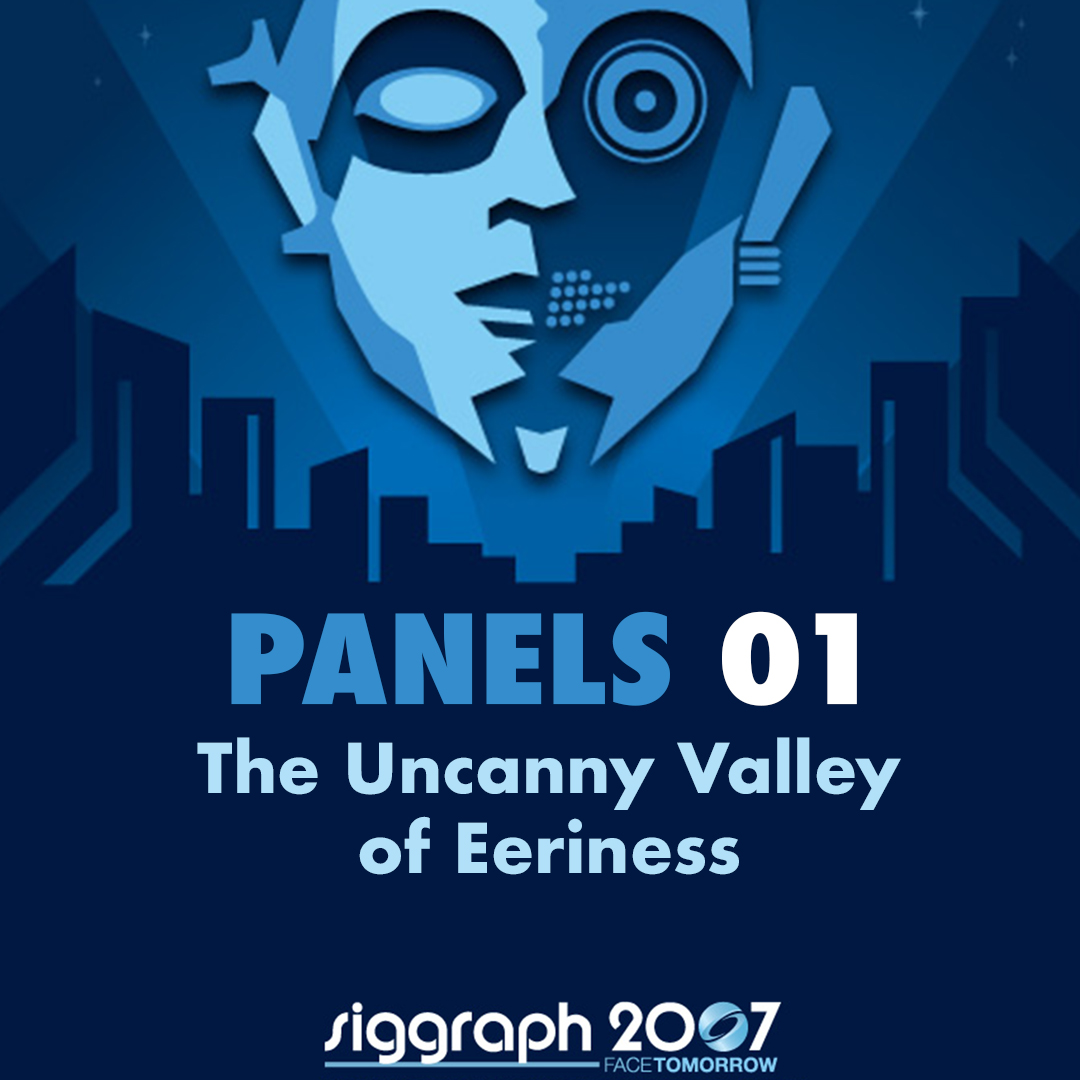“The Uncanny Valley of Eeriness” Moderated by
Conference:
Type:
Entry Number: 01
Title:
- The Uncanny Valley of Eeriness
Presenter(s)/Author(s):
Abstract:
In 1970, an eminent Japanese roboticist, Masahiro Mori, proposed the “uncanny valley” curve to describe the emotional response of humans to nonhuman agents. At the core of his proposal is the idea that as an agent is made more humanlike, the observer’s familiarity does not linearly increase as one would intuit, but falls into a “valley of eeriness,” when the agent closely yet imperfectly impersonates a human being. Although Mori used the uncanny valley to describe robots, the hypothesis has been revived to describe emotional responses to computer-animated agents in movies and videogames.
With computer hardware and software allowing increasingly elaborate rendering of forms and motion, the uncanny valley is becoming a high-stakes concern of the entertainment industry: Is it an insurmountable boundary that one should avoid at all costs, or an outdated idea stemming from the technical limitations of more than 35 years ago? This panel presents different perspectives on the uncanny valley by combining an industrial perspective on the issues at stake (Joe Letteri), neuro-scientific investigations (Thierry Chaminade), and the views of developers of android robots (Karl MacDorman) and computer-animated avatars (Jessica Hodgins).




